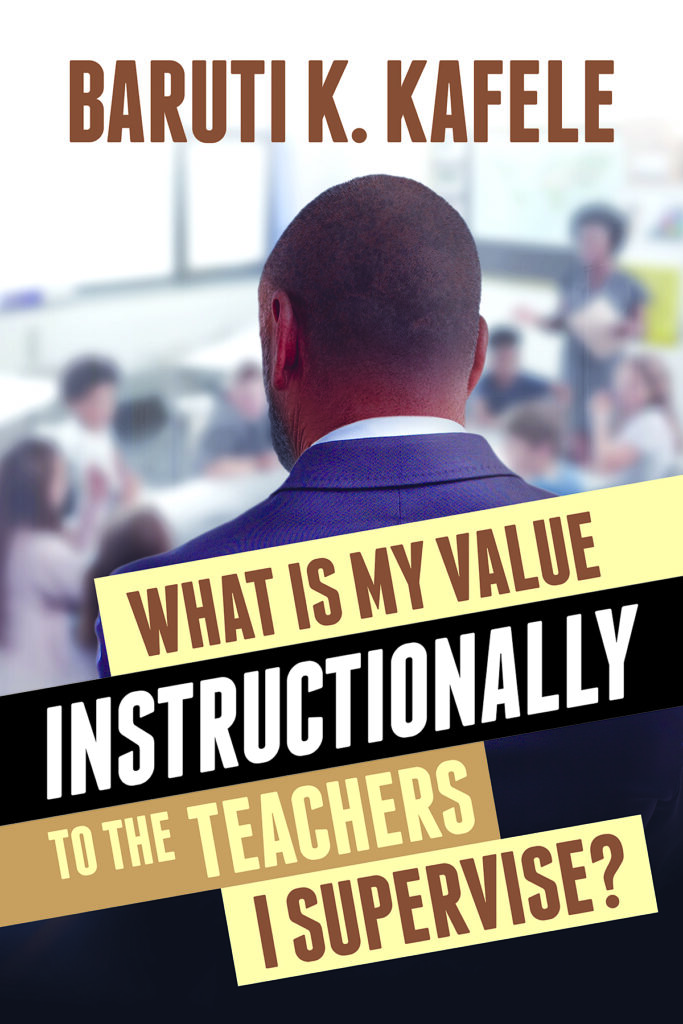
Create Value Through Coaching
Principal Kafele’s new book reminds administrators of the importance of coaching to instructional leadership.
Topics: Mentoring and Coaching

NAESP members recently shared their insights on What Is My Value Instructionally to the Teachers I Supervise? by Baruti Kafele. Answers have been edited for length and clarity.

Take Coaching Into Classrooms
What inspired you to write this book?
I wrote it to provide strategies toward creating a culture of instructional leadership that increases the probability that principals can maximize their time as instructional leaders with instructional coaching as a priority.
What do you hope readers will take away from this book?
As someone who spent five years in high school but then went on to graduate from college summa cum laude, I am convinced that the “young Principal Kafeles” in classrooms fall between the cracks due in part to uncoached teachers. Imagine an athletic event where the athletes compete while the coaches remain in the locker room. We see this every day in schools. Every day is game day in schools—and that requires coaching.
The book features practical strategies to help leaders self-reflect. In your experience, how does self-reflection lead to improved outcomes in school communities?
I equate the self-reflection process to the game film athletic teams use daily to study, dissect, and break down their games. To string days together without hitting the pause button to engage in self-reflection and self-assessment toward self-adjustment is tantamount to an athletic team preparing for a game without studying the film of the previous game.
In what ways do you think principals and assistant principals can grow in their leadership after reading your book?
The book will help principals and assistant principals to grow as instructional coaches, as observers of instruction, as facilitators of the development of a culture of instructional leadership, as providers of pedagogical strategies, [and] as developers of their own instructional coaches.

Aligning Leadership
What was the book’s main message?
Although we are busy as school leaders, we must prioritize our roles as instructional leaders. When we help teachers become better educators, every student in the building benefits and is in the best position to reach their full potential.
What was your favorite part of the book?
“Visiting classrooms is not enough” spoke directly to me. I have made being visible in classrooms a priority, but simply walking in and out is only partly effective. Feedback and coaching are critical to growth, so I now take more intentional time to follow up with teachers about instruction and highlight excellent practices while sharing suggestions to strengthen lessons.
What is one strategy you will incorporate into your leadership approach?
Sharpening our people skills. As school leaders, we always must be aware of our body language and approachability, especially if we are new to the building and need to develop trust quickly.
What is one idea you took from the book to implement in your school?
Principal Kafele speaks about the importance of aligning the instructional effectiveness of our administrative leadership teams, but we plan to take it a step further. We plan to incorporate an instructional ELA or math focus during leadership team meetings to ensure we all take ownership of good instruction schoolwide.

Focus on Feedback
What aspect of the book made you pause to reflect on your leadership?
The part that resonated most with me was the question, “Do other aspects of my leadership prevent me from being the instructional leader my staff and students need me to be?” It caused me to reflect on how I spend my time and to whom I give it. How can I tighten or adjust other systems so that my focus can remain clear on instructional leadership?
What is one takeaway you want to incorporate into your leadership approach?
One idea is to be more consistent and intentional about providing immediate instructional feedback to staff based on our priorities as a building. For example, we are working on monitoring students. I need to block time on my daily calendar to be intentional about when I will be in classrooms to provide specific feedback on these areas. That time on my calendar must be protected.
How will you use these lessons with your staff?
Framing the importance of instructional leadership to staff by asking, “Does every student in our building have access to equitable instruction?” will help guide the work when it’s uncomfortable. Remind staff that no matter who a student’s teacher is, the instructional opportunities should be the same to allow us to tackle hard conversations with the goal in mind.
How has this book made you think differently about instructional leadership?
I love the separation of instructional leadership and instructional coaching. Instructional leadership is more than coaching and providing feedback; it also includes the protection of instructional time and the standard of practice we guarantee in our school. Being an instructional leader must remain the essential focal point of my daily work.
Why should other school leaders read this book?
As leaders, we must never underestimate the influence we have. If our focus is not clear, the work of those we supervise won’t be aligned. While it’s common to hear educators talk about instructional leadership, it often seems daunting with the other tasks on our plate. Principal Kafele reframes instructional leadership as something that can be accomplished through intentional reflection and focus.

Empathy and Equity
What strategies does the book outline to prioritize instructional leadership?
Principal Kafele provides tried-and-true strategies to shift our focus back to what matters most: improving teacher pedagogy and student growth. School leaders should prioritize instructional leadership over disciplinary tasks or “solving” the problems we face every day. A proactive mindset and approach allows us to focus on leading with a fundamental focus on instruction.
What resonated with you most?
The book’s reflective nature and conversational tone resonated deeply. It provided practical guidance on prioritizing the instructional leadership role and assessing one’s value to the team. The use of real-life stories and approaches made a lasting impact. This book is filled with thought-provoking and reflective questions, coupled with advice that we can implement immediately. I felt like Principal Kafele was communicating with me through this book.
Did any strategy make you rethink your leadership?
The book’s emphasis on equity, defined as “meeting young people where they are, as they are,” is an understanding I will incorporate by using the ideas in the book to create equitable learning environments for the teachers and teams I supervise. For example, it is important for me to be a leader of equity and show empathy, while also providing the right resources for teachers to ensure this equity understanding is met for all students every day.
What concepts do you want to share with your staff?
I’ll implement the concept of having an “instructional mentality” by prioritizing instructional leadership as I plan my day. I will foster this mindset shift through active participation with my teams and time in classrooms.
How has the book helped you grow as a leader?
The book provides practical guidance for implementing instructional leadership, bridging the gap between theory and practice. It reinforces the belief that I can be an instructional leader and serves as a readily accessible reminder and guide.

